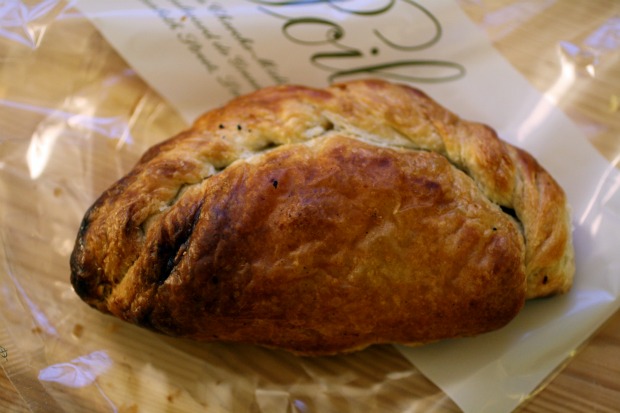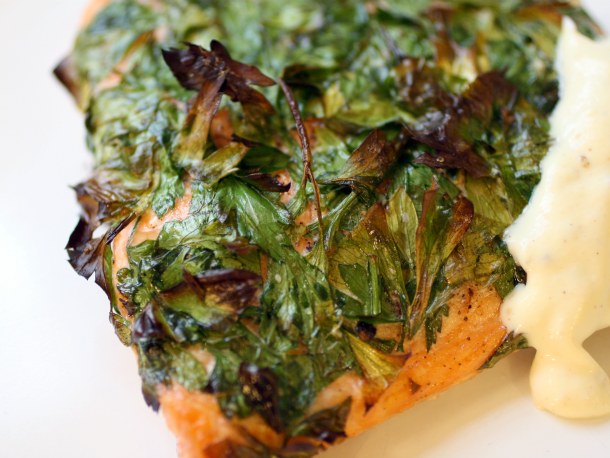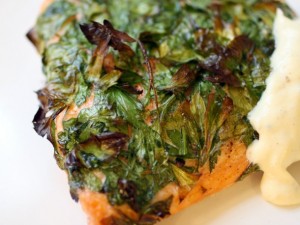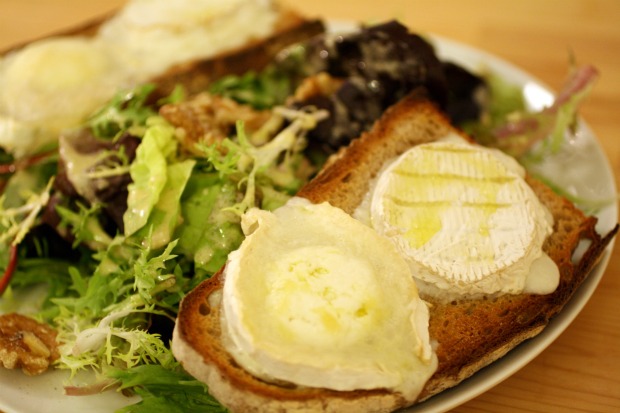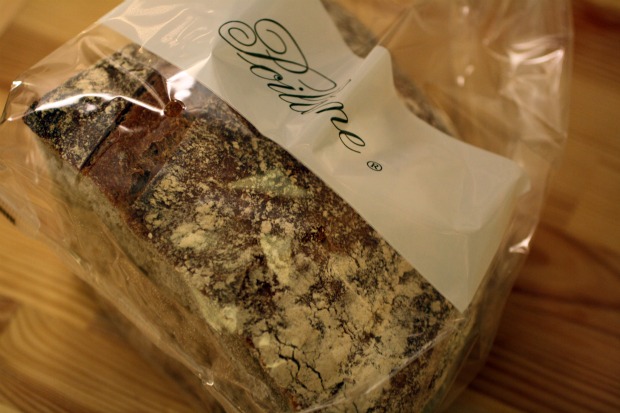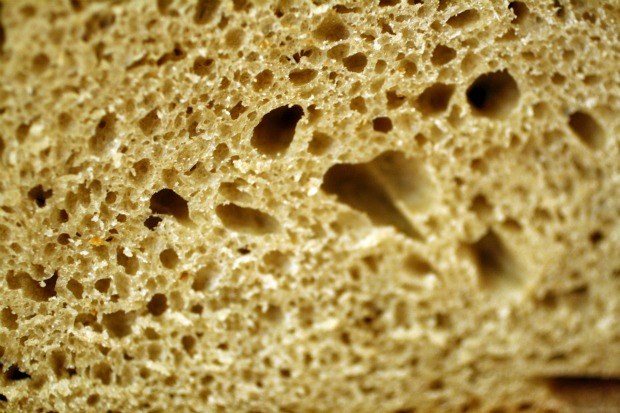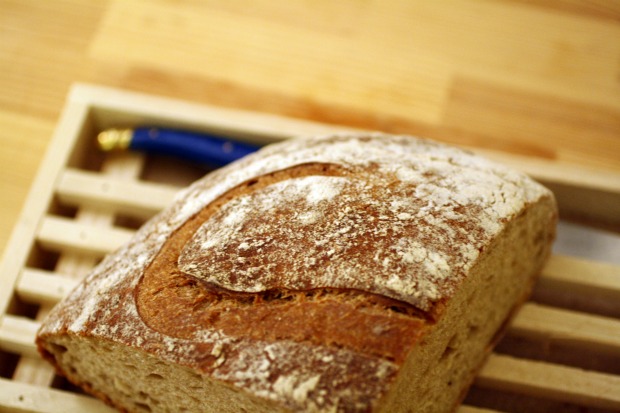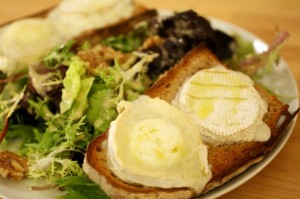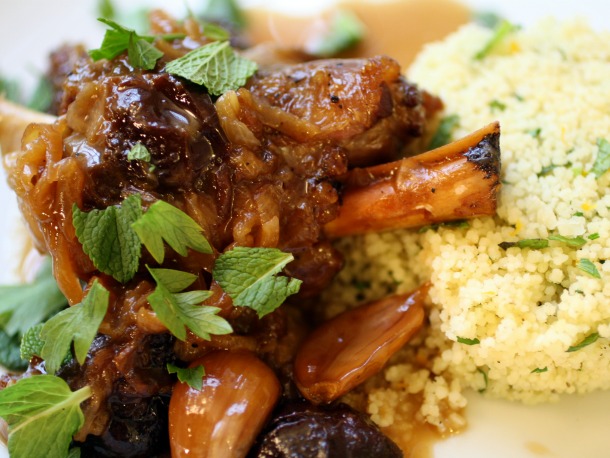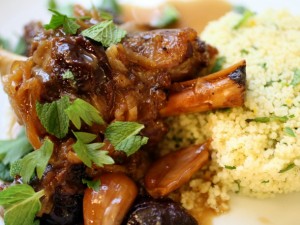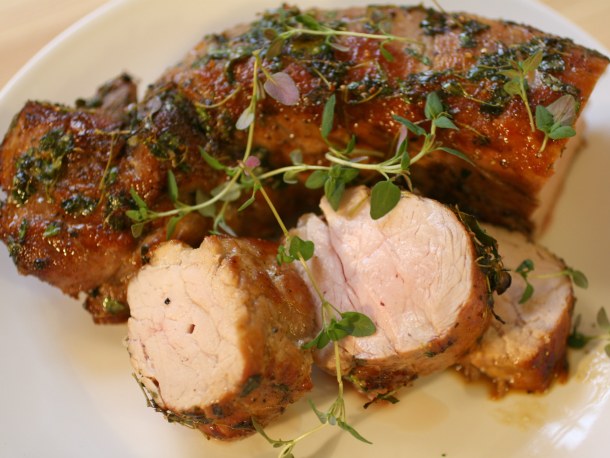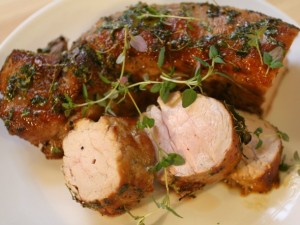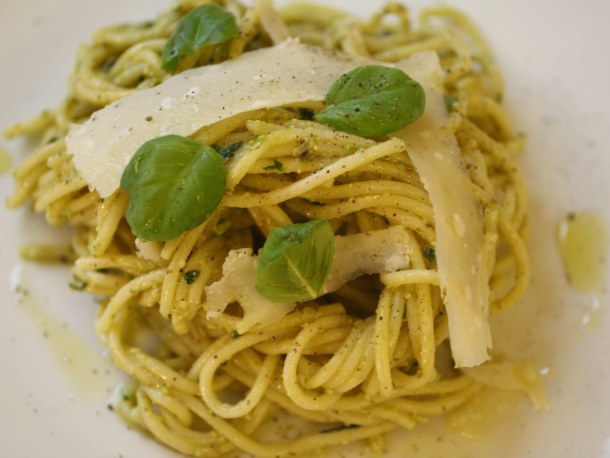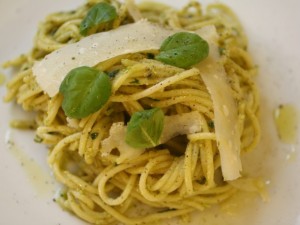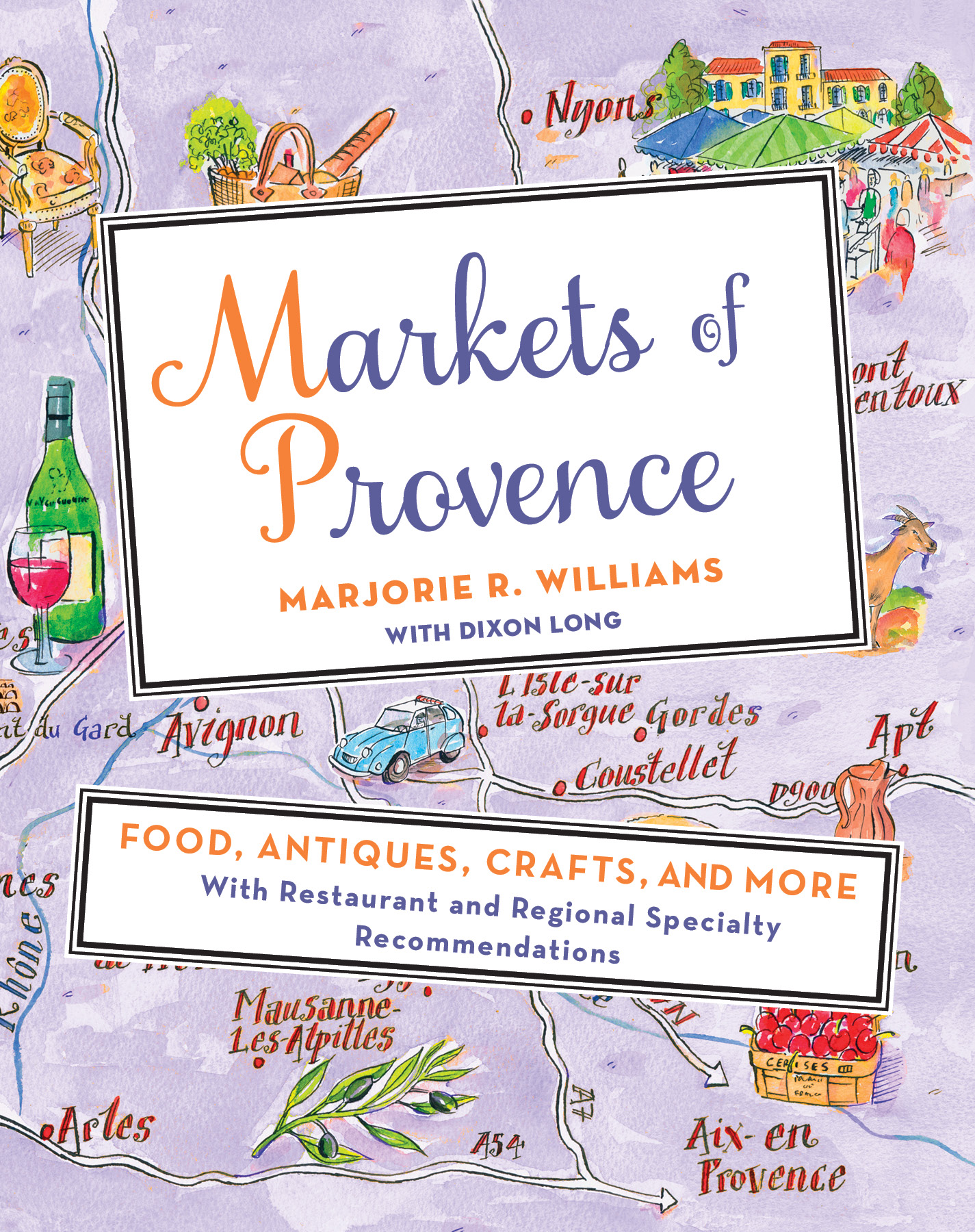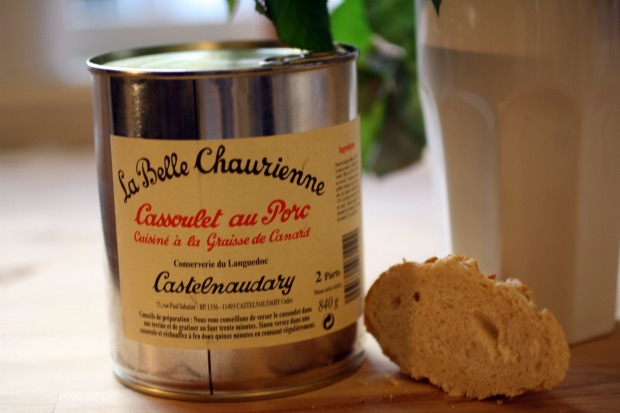
Cassoulet in a Can, with Pork Confit and Duck Fat, from Castelnaudary. 4 Euros, 2 big servings.
Mr. English took me to Paris for my birthday, which, definitely, took the edge off of turning twenty-nine. Next year, at this time, I’ll be thirty. Pretty reductive concept from the outside I’m sure, but to me, it is nothing short of astonishing. We did our usual circuit of St. Germain gems: Le Comptoir, Le Bistrot de l’Alycastre, Les Deux Magots. I had gorgeous Breton razor clams broiled with herb butter and pain au levain for my birthday lunch at Le Comptoir, followed by their gorgeous “Salade Niçoise à ma façon,” which has the most delicious tuna, whole white anchovies, caper berries, potatoes, oil-cured black olives, deliciously limp haricots verts…it’s the best Niçoise in the world. For dinner, at Bistrot de l’Alycastre, Mr. English and I both had Moroccan spiced rare-seared tuna and vegetables, and then I had calamari charred with cêpes in a light cream sauce. And then, a little lemon tart with flickering birthday candles from Carlton bakery, as Mr. English sang me a happy birthday serenade in harmony with Maman over Skype. A clarinetist played downstairs. It was breathless.
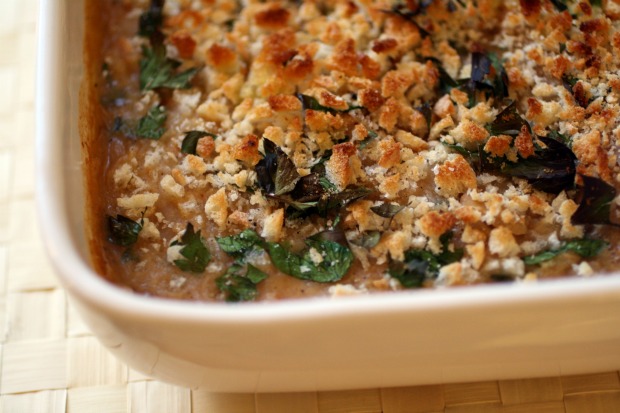
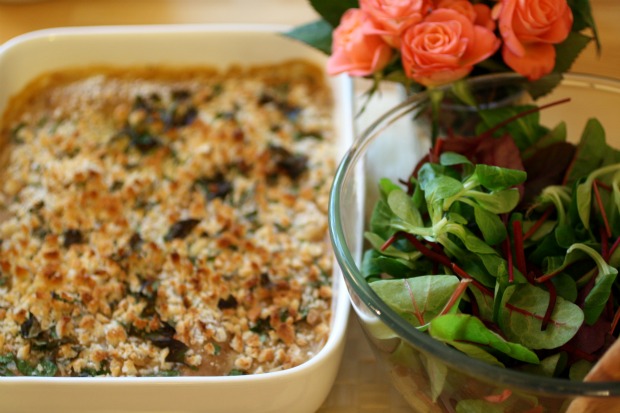
Despite all the walking and shopping and eating on the Ritzier side of normal, I still found myself in the trenches: the basement of the 6th arrondissement Monoprix. Wild horses couldn’t drag me away. Mr. English and I went down there to buy a little padlock, to etch our initials in the metal and snap it onto the Pont des Arts, along with all the other couples whose locks dangle from the bridge over the Seine, into which we ardently threw the keys. But while I was there, despite Mr. English’s tugging on my coat sleeve, I couldn’t help but snatch up a few key pantry items: Maille cornichons, caviar d’aubergines, and after this summer in Toulouse, a can of cassoulet from Castelnaudary.
If you read this blog with any frequency you will have read my over the top emotional diatribes on the cassoulets of Castelnaudary–there are no words. I can call myself a writer, but in reality, I’m an eater, and at times, with my mouth full, words fail me. In Paris, we were a long way from Castelnaudary and Toulouse and the Pyrenees from this summer. So, when I saw the gorgeous hand-drawn label, informing me that I could buy real Castelnaudary cassoulet with either pork, duck, or goose confit, for 4 Euros, rest assured that I had all three cans in the basket before Mr. English pried away the duck and goose from my scraping, scrabbling grasp.
Saturday lunch was the perfect moment. I opened the can, and heated it gently in a small covered pot over low heat. I squeezed in half a head of roasted garlic, to emphasize that garlicky Castelnaudary punch that haunted me way past dinnertime all summer, and added in some fresh leaves of thyme. The haricots blancs were creamy, the sausage and pork confit falling apart and perfect. When the cassoulet was bubbling, I poured it into a shallow baking dish, and covered it with fresh breadcrumbs (3/4 cup to be exact) and a small handful of chopped parsley, salt and pepper, and a drizzle of olive oil. I baked it at 400 degrees until the crumbs were crispy golden brown, and then I covered it in foil and lowered the heat to 325 to let it get good and hotter. I tore up some bread, and tossed a salad (you must always have salad with cassoulet!). I brought it to the table, straight from the can, with a couple of added embellishments. It was gorgeous. I had had cassoulet two weeks earlier at a fancy London French establishment, and it didn’t touch Castelnaudary in a can. The sausage was porky and garlicky, like Toulouse sausage should be. The pork confit was lean, and firm, but falling apart with the nudge of a fork. The beans were creamy, and so flavorful that Mr. English, carnivore that he is, told me he wished they sold cassoulet beans without any of the fixings. Because wouldn’t that be healthier?
Sigh. If only he understood about the duck fat.
How is it that French food can still be this good–from a can? Canned food, to me, is hurricane emergency preparedness–eating baby corn from salty canned water with my fingers in a shuttered, August-hot powerless room. But this, it was real food. It was no wonder they named a whole dance the can-can. Makes perfect and absolute sense.
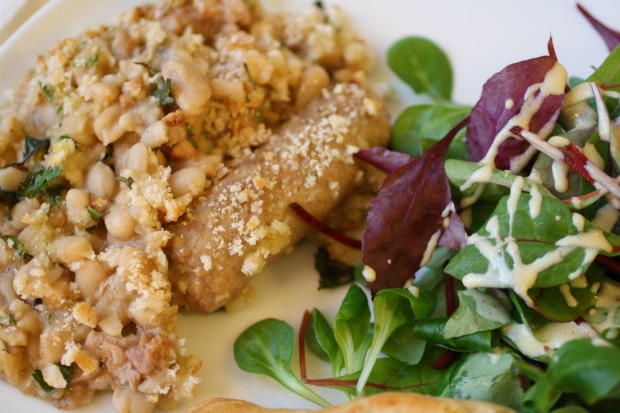
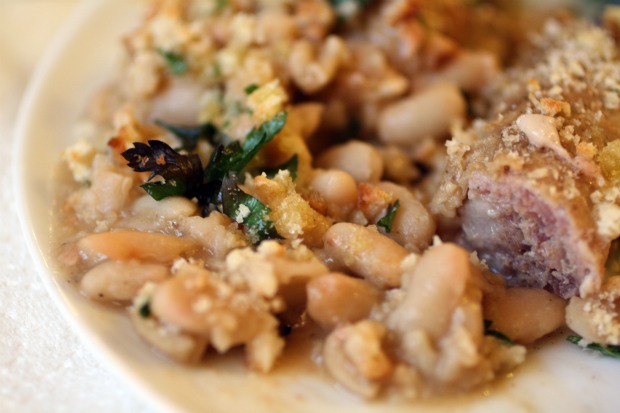
This cassoulet was made by La Belle Chaurienne.
Available from Monoprix.


